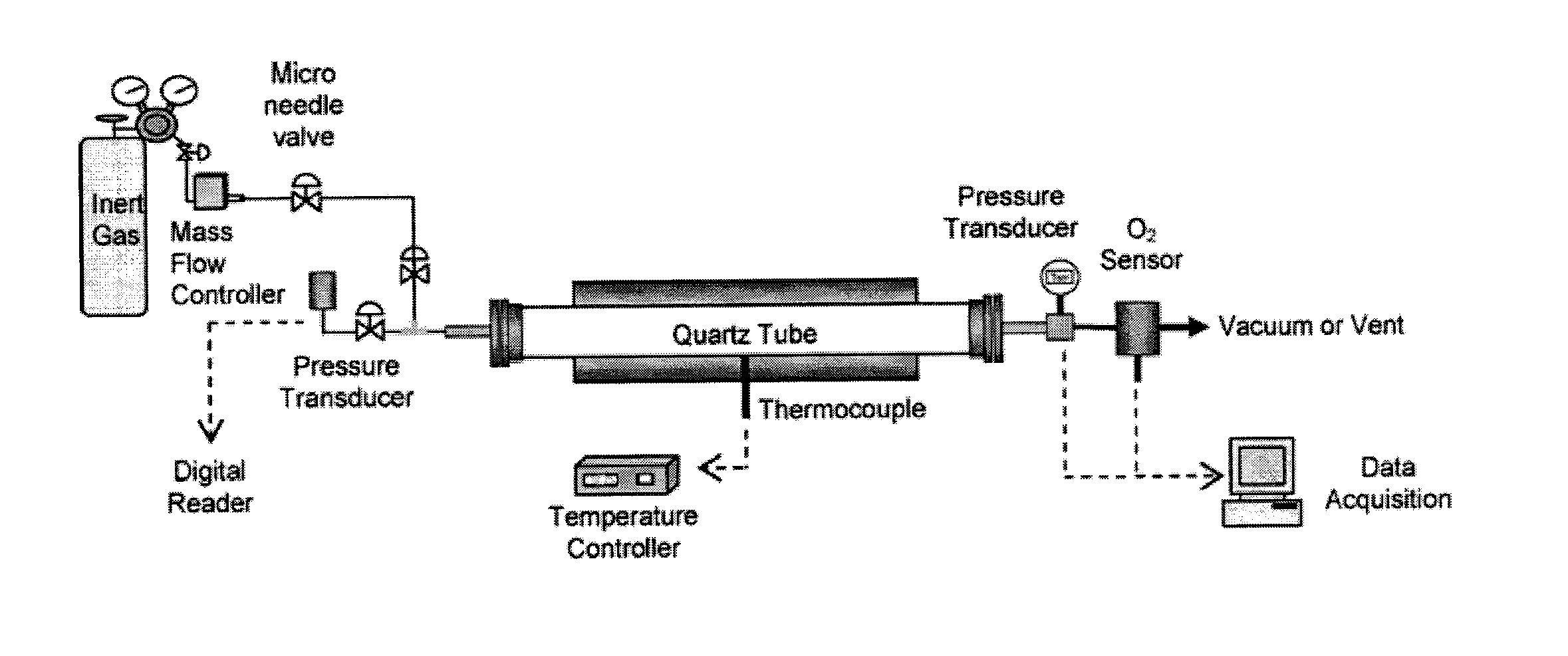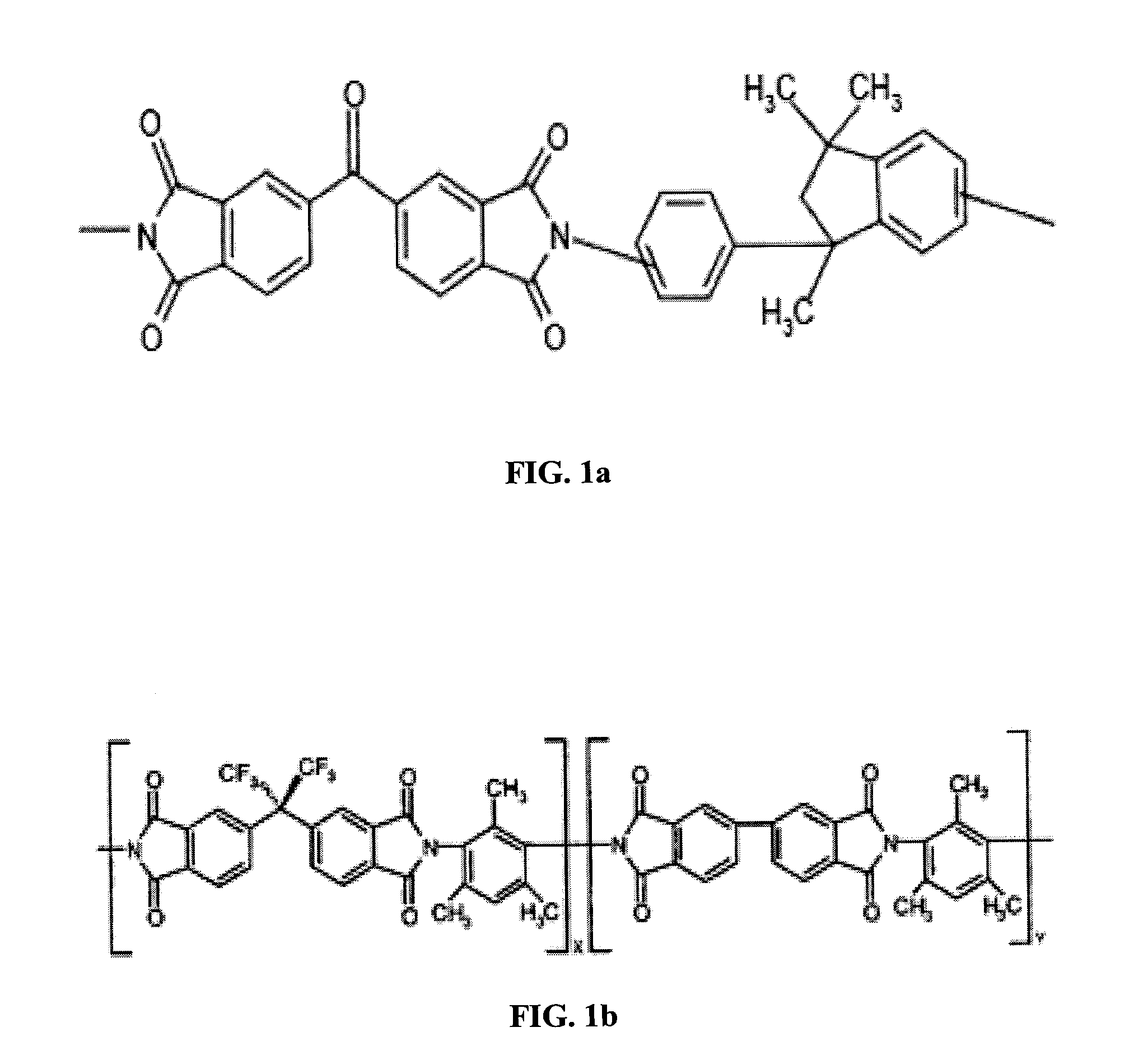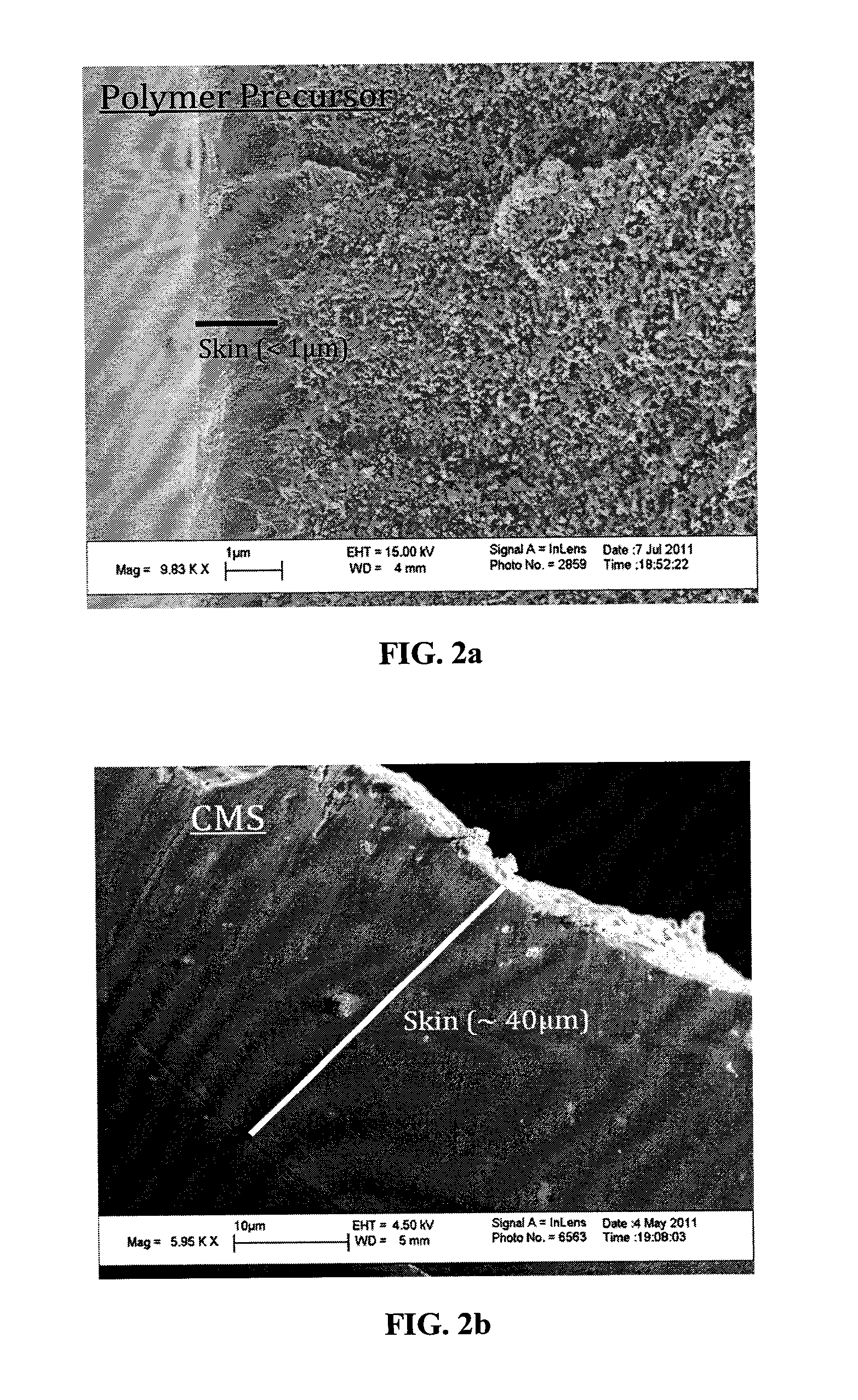Stabilization of Porous Morphologies for High Performance Carbon Molecular Sieve Hollow Fiber Membranes
a carbon molecular and hollow fiber technology, applied in membranes, membrane technology, separation processes, etc., can solve the problems of low pyrolysis productivity, unsatisfactory high methane loss, and pores formed that do not allow uniform distribution of polymer chains, etc., to achieve superior cms membranes, enhanced gas separation capability, and exceptional separation efficiency
- Summary
- Abstract
- Description
- Claims
- Application Information
AI Technical Summary
Benefits of technology
Problems solved by technology
Method used
Image
Examples
example 1
[0120]CMS membranes from Matrimid® precursor where prepared as described in the experimental section above. The validation for the example is shown below:
[0121]SEM Images of the CMS Fiber Membranes from the VTMS Modified Precursor
[0122]CMS membranes from Matrimid® modified precursors shows an improved morphology under SEM. FIG. 11a and 11b are SEM images showing improved substructure morphology for Matrimid®.
[0123]Transport Properties for CMS from Modified Precursors
[0124]CMS—VTMS Modified Matrimid®:
[0125]The CMS module was tested using pure CO2 and pure CH4 at 100 psig with an evacuated permeate. The permeance of the pretreated CMS increased by ˜4× over the untreated CMS with almost no change in selectivity, as shown in TABLE 1.
TABLE 1Comparison of the CMS from modified and unmodifiedMatrimid ® precursors pyrolyzed at650° C. for pure gas feed.CO2 PERMEANCESELECTIVITY(GPU)(CO2 / CH4)CMS With VTMS Modified3892PrecursorCMS With Unmodified Precursor1088
example 2
[0126]CMS membranes from 6FDA:BPDA-DAM precursor where prepared as described in the experimental section above. The validation for the example is shown below:
[0127]SEM Images of the CMS Fiber Membranes from the VTMS Modified Precursor
[0128]CMS membrane from 6FDA:BPDA-DAM modified precursors show an improved morphology under SEM. FIGS. 12a and 12b are SEM images showing improved substructure morphology for 6FDA:BPDA-DAM.
[0129]Transport Properties for CMS from Modified Precursors
[0130]CMS VTMS Modified 6FDA:BPDA-DAM:
[0131]The CMS VTMS modified 6FDA module is tested for both pure gas and mixed gas (50% CO2-50% CH4) streams. Comparison of separation performance for pure gas feed with the unmodified CMS performance values are shown in TABLE 2.
TABLE 2Comparison of the CMS from modified and unmodified 6FDA:BPDA-DAM precursors pyrolyzed at 550° C. for pure gas feed.CO2 PERMEANCESELECTIVITY(GPU)(CO2 / CH4)CMS With VTMS Modified24551PrecursorCMS With Unmodified Precursor5348
[0132]In the case of...
example 3
Anti-Stick Property for VTMS Modified Precursor Fibers
[0134]By using various embodiments of the present invention, the amount of sticking between fibers can be reduced or eliminated while maintaining the good separation performance. A control run with the unmodified Matrimid® precursor fibers was performed where multiple fibers were bundled close to one another during the pyrolysis, shown in FIG. 14a. After the pyrolysis the CMS unmodified fibers were stuck to one another and impossible to separate the fibers without causing serious damage or breakage. The same experiment was performed on Matrimid® precursors modified according to various embodiments of the present invention, as shown in FIG. 14b. After pyrolysis these CMS VTMS modified fibers do not stick together and achieve an “anti-stick” property.
[0135]In addition to the “anti-stick” property, it can also be desirable that CMS fibers have good separation performance. The permeance of bundled fibers was compared to both non-bund...
PUM
| Property | Measurement | Unit |
|---|---|---|
| Tg | aaaaa | aaaaa |
| Tg | aaaaa | aaaaa |
| ceiling temperatures | aaaaa | aaaaa |
Abstract
Description
Claims
Application Information
 Login to View More
Login to View More - R&D
- Intellectual Property
- Life Sciences
- Materials
- Tech Scout
- Unparalleled Data Quality
- Higher Quality Content
- 60% Fewer Hallucinations
Browse by: Latest US Patents, China's latest patents, Technical Efficacy Thesaurus, Application Domain, Technology Topic, Popular Technical Reports.
© 2025 PatSnap. All rights reserved.Legal|Privacy policy|Modern Slavery Act Transparency Statement|Sitemap|About US| Contact US: help@patsnap.com



